The numbers of books read in the past months by the members of a reading club are shown in the following table.
No. books
No. members
Find the probability that three randomly selected members have all read fewer than eight books, given that they have all read more than four books.

Important Questions on Probability
One hundred people are attending a conference. The following Venn diagram shows how many are male , have brown eyes and are right-handed .
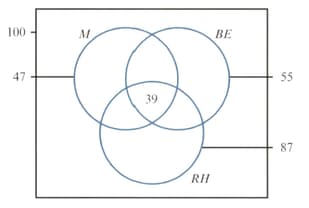
Given that there are males with brown eyes, right-handed males and 46 right-handed people with brown eyes, copy and complete the Venn diagram.
One hundred people are attending a conference. The following Venn diagram shows how many are male , have brown eyes and are right-handed .
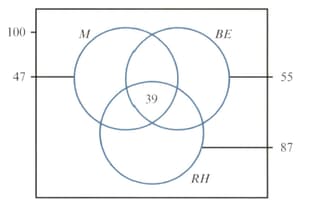
Two attendees are selected at random. Find the probability that they are both females who are not right-handed. [correct up to five decimal places]
One hundred people are attending a conference. The following Venn diagram shows how many are male , have brown eyes and are right-handed .
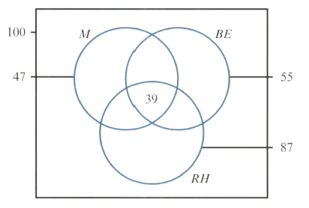
Two attendees are selected at random. Find the probability that exactly one of them is right-handed, given that neither of them have brown eyes. [correct up to three decimal places]
A student travels to college by either of two routes, or . The probability that they use route is , and the probability that they are passed by a bus on their way to college on any particular day is . They are twice as likely to be passed by a bus when they use route as when they use route .
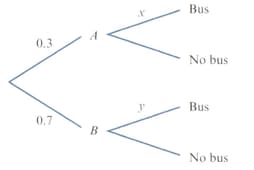
Use the tree diagram opposite to form and solve a pair of simultaneous equations in and .
A student travels to college by either of two routes, or . The probability that they use route is , and the probability that they are passed by a bus on their way to college on any particular day is . They are twice as likely to be passed by a bus when they use route as when they use route .
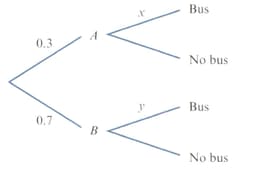
Find the probability that the student uses route , given that they are not passed by a bus on their way to college. [correct up to three decimal places]
Two ordinary fair dice are rolled. If the first shows a number less than , then the score is the mean of the numbers obtained; otherwise the score is equal to half the absolute (non-negative) difference between the numbers obtained. Find the probability that the score is:
positive
Two ordinary fair dice are rolled. If the first shows a number less than , then the score is the mean of the numbers obtained; otherwise the score is equal to half the absolute (non-negative) difference between the numbers obtained. Find the probability that the score is:
greater than , given that it is less than
